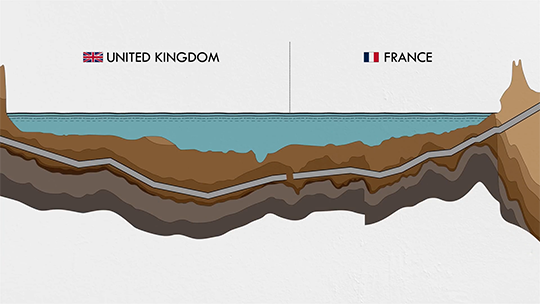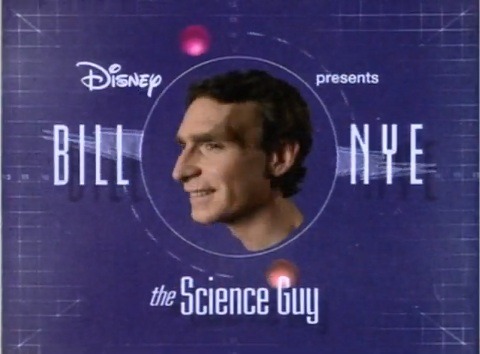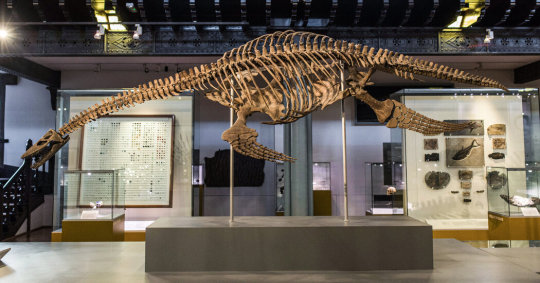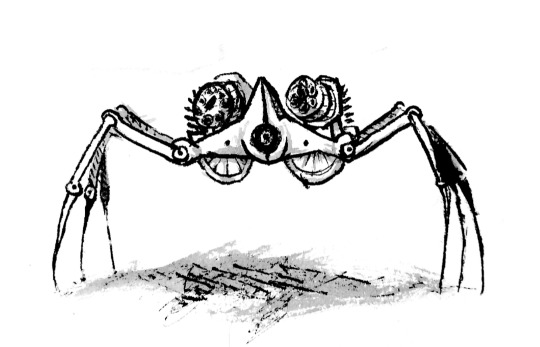#science channel
Text

#tumblr memes#meme#memes#meme humor#relatable meme#relatable memes#relatable humor#science memes#science channel#national geographic#nat geo wild#tv memes#tv show memes#dank memes#dank humor#humor#humour#lol memes#lol#funny#funny shit#ha ha funny#funny memes#funny meme haha#funny post#funny stuff#dankest memes#funny image#funny meme xd#science side of tumblr
21 notes
·
View notes
Text
Sound reveals giant blue whales dance with the wind to find food
https://sciencespies.com/environment/sound-reveals-giant-blue-whales-dance-with-the-wind-to-find-food/
Sound reveals giant blue whales dance with the wind to find food
A study by MBARI researchers and their collaborators published today in Ecology Letters sheds new light on the movements of mysterious, endangered blue whales. The research team used a directional hydrophone on MBARI’s underwater observatory, integrated with other advanced technologies, to listen for the booming vocalizations of blue whales. They used these sounds to track the movements of blue whales and learned that these ocean giants respond to changes in the wind.
Along California’s Central Coast, spring and summer bring coastal upwelling. From March through July, seasonal winds push the top layer of water out to sea, allowing the cold water below to rise to the surface. The cooler, nutrient-rich water fuels blooms of tiny phytoplankton, jumpstarting the food web in Monterey Bay, from small shrimp-like krill all the way to giant whales. When the winds create an upwelling event, blue whales seek out the plumes of cooler water, where krill are most abundant. When upwelling stops, the whales move offshore into habitat that is transected by shipping lanes.
“This research and its underlying technologies are opening new windows into the complex, and beautiful, ecology of these endangered whales,” said John Ryan, a biological oceanographer at MBARI and lead author of this study. “These findings demonstrate a new resource for managers seeking ways to better protect blue whales and other species.”
The directional hydrophone is a specialized underwater microphone that records sounds and identifies the direction from which they originate. To use this technology to study blue whale movements, researchers needed to confirm that the hydrophone reliably tracked whales. This meant matching the acoustic bearings to a calling whale that was being tracked by GPS. With confidence in the acoustic methods established, the research team examined two years of acoustic tracking of the regional blue whale population.
This study built upon previous research led by MBARI Senior Scientist Kelly Benoit-Bird, which revealed that swarms of forage species — anchovies and krill — reacted to coastal upwelling. This time, researchers combined satellite and mooring data of upwelling conditions and echosounder data on krill aggregations with the acoustic tracks of foraging blue whales logged by the directional hydrophone.
“Previous work by the MBARI team found that when coastal upwelling was strongest, anchovies and krill formed dense swarms within upwelling plumes. Now, we’ve learned that blue whales track these dynamic plumes, where abundant food resources are available,” explained Ryan.
advertisement
Blue whales recognize when the wind is changing their habitat and identify places where upwelling aggregates their essential food — krill. For a massive animal weighing up to 150 tonnes (165 tons), finding these dense aggregations is a matter of survival.
While scientists have long recognized that blue whales seasonally occupy Monterey Bay during the upwelling season, this research has revealed that the whales closely track the upwelling process on a very fine scale of both space (kilometers) and time (days to weeks).
“Tracking many individual wild animals simultaneously is challenging in any ecosystem. This is especially difficult in the open ocean, which is often opaque to us as human observers,” said William Oestreich, previously a graduate student at Stanford University’s Hopkins Marine Station and now a postdoctoral fellow at MBARI. “Integration of technologies to measure these whales’ sounds enabled this important discovery about how groups of predators find food in a dynamic ocean. We’re excited about the future discoveries we can make by eavesdropping on blue whales and other noisy ocean animals.”
Background
Blue whales (Balaenoptera musculus) are the largest animals on Earth, but despite their large size, scientists still have many unanswered questions about their biology and ecology. These gentle giants seasonally gather in the Monterey Bay region to feed on small shrimp-like crustaceans called krill.
advertisement
Blue whales are elusive animals. They can travel large distances underwater very quickly, making them challenging to track. MBARI researchers and collaborators employed a novel technique for tracking blue whales — sound.
MBARI’s MARS (Monterey Accelerated Research System) observatory offers a platform for studying the ocean in new ways. Funded by the National Science Foundation, the cabled observatory provides continuous power and data connectivity to support a variety of instruments for scientific experiments.
In 2015, MBARI researchers installed a hydrophone, or underwater microphone, on the observatory. The trove of acoustic data from the hydrophone has provided important insights into the ocean soundscape, from the migratory and feeding behaviors of blue whales to the impact of noise from human activities.
In 2019, MBARI and the Naval Postgraduate School installed a second hydrophone on the observatory. The directional hydrophone gives the direction from which a sound originated. This information can reveal spatial patterns for sounds underwater, identifying where sounds came from. By tracking the blue whales’ B call — the most powerful and prevalent vocalization among the regional blue whale population — researchers could follow the movements of individual whales as they foraged within the region.
Researchers compared the directional hydrophone’s recordings to data logged by tags that scientists from Stanford University had previously deployed on blue whales. Validating this new acoustic tracking method opens new opportunities for simultaneously logging the movements of multiple whales. It may also enable animal-borne tag research by helping researchers find whales to tag. “The integrated suite of technologies demonstrated in this paper represents a transformative tool kit for interdisciplinary research and mesoscale ecosystem monitoring that can be deployed at scale throughout protected marine habitats. This is a game changer and brings both cetacean biology and biological oceanography to the next level,” said Jeremy Goldbogen, an associate professor at Stanford University’s Hopkins Marine Station and a coauthor of the study.
This new methodology has implications not only for understanding how whales interact with their environment and one another but also for advancing management and conservation.
Despite protections, blue whales remain endangered, primarily from the risk of collisions with ships. This study showed that blue whales in Monterey Bay National Marine Sanctuary regularly occupy habitat transected by shipping lanes. Acoustic tracking of whales may provide real-time information for resource managers to mitigate risk, for example, through vessel speed reduction or rerouting during critical periods. “These kinds of integrated tools could allow us to spatially and temporally monitor, and eventually even predict, ephemeral biological hotspots. This promises to be a watershed advancement in the adaptive management of risks for protected and endangered species,” said Brandon Southall, president and senior scientist for Southall Environmental Associates Inc. and a coauthor of the research study.
Support for this research was provided by the David and Lucile Packard Foundation. The National Science Foundation funded the installation and maintenance of the MARS cabled observatory through awards 0739828 and 1114794. Directional acoustic processing work was supported by the Office of Naval Research, Code 32. Tag work was funded in part by the National Science Foundation (IOS-1656676), the Office of Naval Research (N000141612477), and a Terman Fellowship from Stanford University.
#Environment
#10-2022 Science News#2022 Science News#acts of science#Earth Environment#earth science#Environment and Nature#everyday items#Nature Science#New#News Science Spies#October 2022 Science News#Our Nature#planetary science#production line#sci_evergreen1#Science#Science Channel#science documentary#Science News#Science Spies#Science Spies News#Space Physics & Nature#Space Science#Environment
36 notes
·
View notes
Text
Hate how the science channel is full of completely bullshit conspiracy theory shows that showcase phenomena as some "oooh aliens must have made this" spooky type shit. I remember when it used to be about how the nasa space program worked, what they used the giant hubble telescopes for, geology and why it rocks, and the marvels of astronomy and the wonders of the ocean. Now I'm just disappointed that there's shows that don't do anything to increase your curiosity or broaden your mind.
#science channel#geology#oceanography#i miss the good shows#the ones that made science interesting#not the conspiracy ones#those are dumb#astronomy
3 notes
·
View notes
Text
Did y’all know the Science Channel on YouTube has How it’s Made??? It’s over. I’m never getting anything done now. This is all I will be watching.
0 notes
Text
Tech educational toy:
youtube
In the video above a technological educational toy that any studious elementary school boy would like to have in his room at home.
When did occultists return my motorcycle that I bought? Nobody likes a bandit, nor a bandit likes a bandit.
1 note
·
View note
Text
The how it's made them song goes SO HSTD
0 notes
Text
Reblogs = sample size etc etc
I'm aiming for informative, not funny - any context on how long is too long to bother watching would be nice as well so feel free to share in the tags
#youtube#twitch#scicomm#videos#video essays#my art#science#(context: im thinking about making a youtube channel again since all the informative videos about hiveminds are less than 5 minutes long)#(you cant even get into the drivers of eusociality in 5 minutes cmon)#but also i know i like my videos much longer than anyone else i know sooo
429 notes
·
View notes
Text
A Contemplation Seed on 'Anti-Gravity' (for Better Endings)
A Contemplation Seed on ‘Anti-Gravity’ (for Better Endings)
Imagine: You live in a world where “gravity” does not exist. Instead of perpetually falling toward heavier matter, you rise or move about in any direction at will, according to a Law of Assumption. You simply assume a viewpoint at whatever vista you allow; even multiple viewpoints at once, if you wish. You perceive as a conscious, distinct, unique and aware point of view, with no fixed body yet…

View On WordPress
#addiction#anti-gravity#contemplation#creativity#gravity#Higher Awareness#I am that I am#imagination#meditation#metaphors for living#Science Channel#Soul
0 notes
Text
The Channel Tunnel

To celebrate the 30th anniversary of the Channel Tunnel, Practical Engineering takes a look back at the construction and operation of this incredible piece of infrastructure. (Image and video credit: Practical Engineering)
Read the full article
172 notes
·
View notes
Text










Disney’s Bill Nye The Science Guy (1994 - 1999) 🔬🧪
#Disney#bill nye#bill nye the science guy#science#1994#1995#1996#1997#1998#1999#disney channel#y2k#2000s#90s#1990s#90s aesthetic#90s kids#90s nostalgia#1990s aesthetic#1990s kid#1990s nostalgia#2000s nostalgia#2000s kids#2000s style#y2k nostalgia#00s#y2k aesthetic#y2k style#2000s kid#00s kid
363 notes
·
View notes
Text
Fossil Find Tantalizes Loch Ness Monster Fans
https://sciencespies.com/news/fossil-find-tantalizes-loch-ness-monster-fans/
Fossil Find Tantalizes Loch Ness Monster Fans

Plesiosaurs went extinct 66 million years ago, but evidence that the long-necked reptiles lived in freshwater, not just oceans, has offered hope to Nessie enthusiasts.
LONDON — Millions of years before the first (alleged) sighting of the Loch Ness monster, populations of giant reptiles swam through Jurassic seas in areas that are now Britain. Known as plesiosaurs, these long-necked creatures were thought to have dwelled exclusively in oceans.
But a discovery published in a paper last week by researchers in Britain and Morocco added weight to a hypothesis that some Loch Ness monster enthusiasts have long clung to: that plesiosaurs lived not just in seas, but in freshwater, too. That could mean, they reasoned excitedly, that Nessie, who is sometimes described as looking a lot like a plesiosaur, really could live in Loch Ness, a freshwater lake.
Local papers have celebrated the finding. It “gives further credit to the idea that Nessie may have been able to survive and even thrive in Loch Ness,” said an article on page 32 of the Inverness Courrier, a biweekly newspaper in the Scottish Highlands. “Loch Ness Monster bombshell,” blared a headline from Britain’s Daily Express tabloid. “Existence of Loch Ness Monster is ‘plausible’” read headlines in The Scotsman, The Telegraph and elsewhere, seizing on a phrase in the University of Bath’s announcement of the study’s findings.
This is not the first study to find that plesiosaurs lived in freshwater. “This new study is simply providing additional evidence for certain members of this group living in freshwater,” said Dean Lomax, a paleontologist and visiting scientist at the University of Manchester. “We’ve always known this.”
But Nick Longrich, the lead author of the study, said his team had one of the stronger cases for it because they found fossils of 12 plesiosaurs, proof that it was not just one plesiosaur that wandered into freshwater and then died there.
“The more plesiosaur fossils discovered in freshwater environments, the more this will further build the picture to explain why plesiosaurs might be turning up in freshwater environments around the world,” said Georgina Bunker, a student who was a co-author of the paper.
Dr. Longrich, a paleontologist and evolutionary biologist at the University of Bath, said it was “completely unexpected” to find the fossil of a plesiosaur that had lived in an 100-million-year-old freshwater river system that is now the Sahara.
While on a research trip to Morocco, he was sifting through a box in the back room of a shop when he spotted a “kind of chunky” bone, which turned out to be the arm of a five-foot long baby plesiosaur. Dr. Longrich paid the cashier no more than 200 Moroccan Dirham, or about $20, after bargaining to bring down the price, and brought the fossils back to Britain for further study.
Nick Longrich/University of Bath
“Once we started looking, the plesiosaur started turning up everywhere,” he said. “It reminds you there’s a lot we don’t know.” (The fossils will be returned to museums in Morocco at a later date, he said.)
As the news of the study made headlines last week, some Nessie fans were hopeful. George Edwards, who was for years the skipper of a Loch Ness tourism boat called the Nessie Hunter, said that for him the new study showed how creatures could adapt to survive in new environments — and that the world is full of mysteries. Take the coelacanth, a bony fish that was thought to have become extinct millions of years ago but was found in 1938 by a South African museum curator on a fishing trawler. “Lo and behold, they found them, alive and kicking,” Mr. Edwards said. “Anything is possible.”
Mr. Edwards said he had seen unexplained creatures in Loch Ness plenty of times: “There’s got to be a family of them.” From what he has seen, the creatures have a big arched back, no fins and are somewhat reminiscent of a plesiosaur.
But there is one detail that some Nessie lovers may have overlooked in their embrace of the plausibility of Nessie’s existence: Plesiosaurs became extinct at the same time as dinosaurs did, some 66 million of years ago. Loch Ness was only formed about 10,000 years ago, and before that it was ice.
Valentin Fischer, an associate professor of paleontology at the University of Liège in Belgium, said that it would currently be impossible for a marine reptile like the plesiosaur to live in Loch Ness.
Nick Longrich/University of Bath
The first recorded sighting of Nessie dates back to the sixth century A.D., when the Irish monk St. Columba was said to have driven a creature into the water. But global interest was revived in the 20th century, after a British surgeon, Col. Robert Wilson, took what became the most famous photo of the Loch Ness monster in 1934. Sixty years later, the photograph was revealed to be a hoax.
But some people were not discouraged, and, ever since, throngs of tourists have traveled to Loch Ness each year in hopes of seeing the monster.
There have been more than 1,100 sightings at Loch Ness, including four this year, according to the register of official sightings.
A famous photograph of the Loch Ness Monster taken in 1934 was later revealed to have been a hoax.Keystone/Getty Images
Steve Feltham, a full-time monster hunter who has lived on the shores of Loch Ness for three decades, said the British-Moroccan study was interesting, but that it was irrelevant to his search. Ever since it became clear that the famous 1934 photo of Nessie was fake, he has stopped believing that Nessie was a plesiosaur. Plesiosaurs have to come up for air, so he figures he would have seen it during the 12 hours a day that he scans the loch. Instead, he scans the water for giant fish that look like a boat turned upside down.
“I struggle to think of any bona fide Nessie hunter that still believes in the plesiosaur,” he said. “The hunt has moved on from that.”
#News
#2022 Science News#8-2022 Science News#acts of science#August 2022 Science News#Earth Environment#earth science#Environment and Nature#everyday items#Nature Science#New#News Science Spies#Our Nature#planetary science#production line#sci_evergreen1#Science#Science Channel#science documentary#Science News#Science Spies#Science Spies News#Space Physics & Nature#Space Science#News
38 notes
·
View notes
Text
Jason: When I die, donate my body to your funky science YouTube videos
Nico: Okay. Thank you
Jason: Except my middle fingers- give those to my father
Nico, smiling: Will do
#nico and will have a youtube channel dedicated to poking around jasons dead body#jason gave concent as you can see here#if you have no idea what im referencing im talking about a past post that got a lot of notes#nico and will do weird science stuff together#jasons body is going to good use#zues can suck it#we dont like him#pjo hoo toa tsats#pjo hoo toa#jason grace#nico di angelo#will solace#solangelo#zues#do not reblog with jason x nico please#jupiter can really be a better dad#jupiter
169 notes
·
View notes
Text
I’m a little over halfway into Farscape season 1. I’m convinced now that this show was created because the creators thought the sci-fi genre wasn’t sexy/lewd enough.
I mean…one character had an orgasm from exposure to sunlight. John and D’Argo had wet dreams induced through alien mind control. The very necessary scene where Aeryn confirmed she was wearing John’s underwear by reading the Calvin Klein tag. John and Aeryn nearly having sex because they thought they were gonna die.
It’s gotten to the point where every scene is now coming off as, “this feels a bit sexual”. For example, there was a scene where John was feeding Chiana through the cell doors. It was just eating food, but the way Chiana was eating it felt suggestive.
Me watching Stargate/Star Trek/most other sci-fi shows:

Me watching Farscape:

#farscape#john crichton#aeryn sun#ka d'argo#pa'u zotoh zhaan#rygel#chiana#Farscape season 1#Farscape liveblog#scifi#science fiction#sci fi#sci fi tv#scifi tv#stargate#star trek#science fiction television#john x aeryn#syfy channel#moya#my reaction
44 notes
·
View notes
Text
Science Channel - How It's Made
1 note
·
View note
Text
WIP Wednesday
Long time no see, uh?
Thank you so much for the tag @whimsyswastry (I'm going through everything, sorry if I'm late in replying, just 3000 things all at once keepin me busy)! <3

I was sent the cover of Jessie Dumont's I Prefer Girls by @ndostairlyrium (Hi Ali you're tagged), and of course it had to be done. I was about to post it, but then I realised I completely forgot I should really do the background on my own, shouldn't I. -3-
Some colour maps from an upcoming illustration. I finally sat down to make tarot cards for my babies, and Alyra came jumping in first place. Considering her arcana is The Chariot, it only seems fitting she gets to be the first. I am convinced on the bottom right version, but tell me what you think of course. :)
A doodle. When I played the Noveria mission in Mass Effect, that logo with the flaming vial just screamed to me Science Bros. They WOULD adopt it as their brand. They're scientists, and they're hot! It ensued picturing them in the Mass Effect universe, and thinking that it was them in that lab. Experimenting on the Rachni. They managed to convince one, a cute girl named Polpettina ("Little she-meatball" in italian) Aisling taught not to eat humanoid flesh by singing to her, pretty constantly, only songs about proper food. It worked, they got on the Normandy, Polpettina became the most spoiled rachni in the galaxy. Sure, they both get possessed by the Queen at times, but it's all innocent.
Tagging: @salsedinepicta @shivunin @dungeons-and-dragon-age @daggerbean @theluckywizard @pinayelf @melisusthewee @heniareth @dreadfutures AND YOU!
#wip wednesday#dragon age#hawkebela#warden mahariel#dorian pavus#science bros#mass effect#rachni#greypetrel#it's glazed I hope the quality is still good#ask me how much fun I had in drawing that corset#(a lot! the embroideries to close the boning channel more securely! **)
38 notes
·
View notes
Text

I just remembered this and found my old turret sketch of a more militarized version. And realized this might actually work as a design for the "military-grade" turret.

#portal 2#cave johnson#my art#aperture science#portal turret#those are two m61 vulcans on its back#i dont know if i should add this version to#aperture: cavesystem#but maybe#also the video is from the official valve youtube channel
37 notes
·
View notes